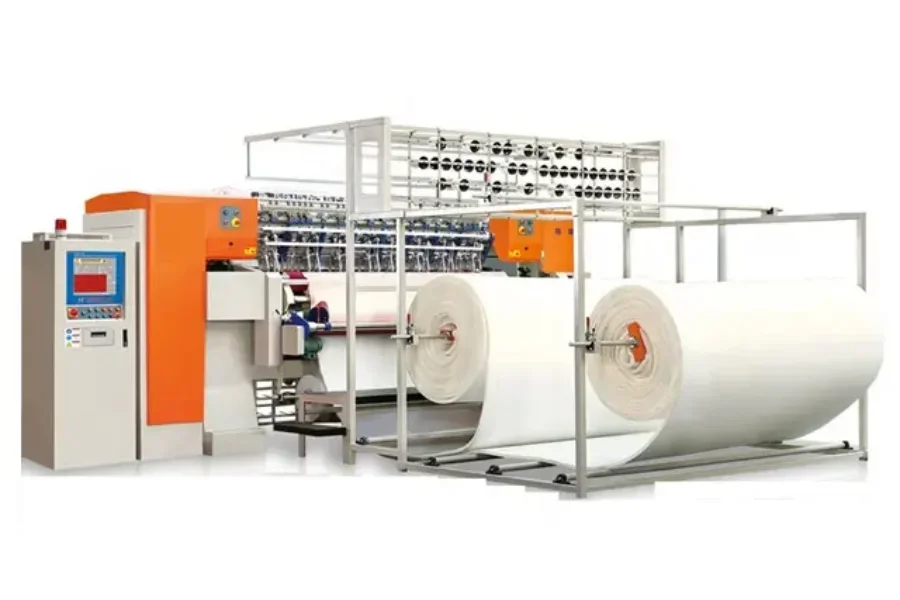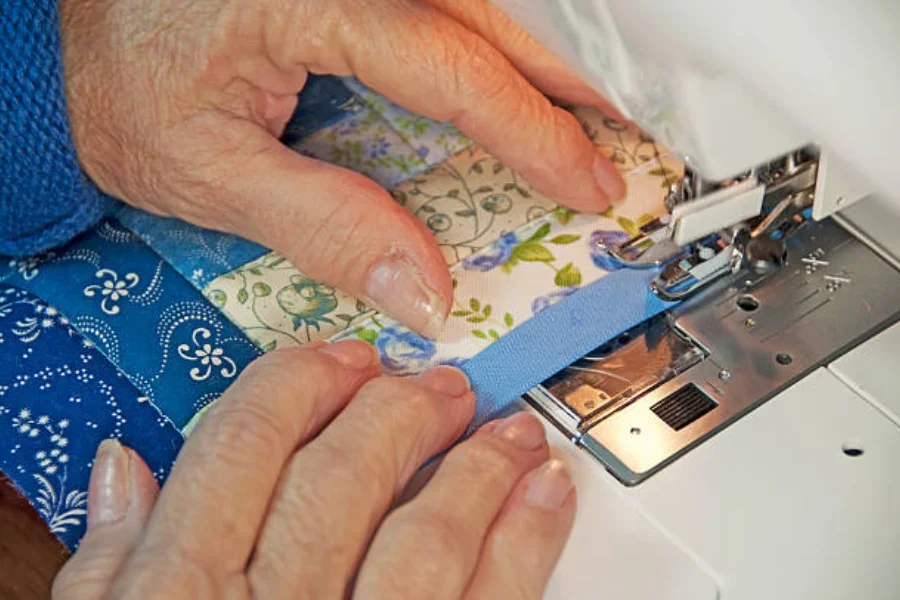A quilting machine has amazing capabilities and unique features that come with a range of benefits to users. Over the years, quilting machines have gained a lot of popularity and many people are using them to complete their projects. What many people don’t know is that there are different types of quilting machines with different capabilities. So, before you end up buying any quilting machines, it is important to have full information about these machines.
This article will give you the ultimate guide to selecting suitable quilting machines. It will then look at the different types of quilting machines available in the market, as well as their market share, size, demand, and expected growth rate in the coming years.
Table of Contents
Overview of the quilting machines market
Structure of quilting machines
The ultimate guide to selecting quilting machines
Conclusion
Overview of the quilting machines market

Transparency Market Research reported a rise in demand for quilting machines globally for the forecast period 2021-2031. This is due to the surge in popularity of products like tablecloths, handbags, wall hangings, and home decor items. This rise in demand has encouraged manufacturers to produce technologically advanced machines that buyers can leverage to create quality products using minimum time. Some of these key manufacturers include Gammil Inc., Berry Impex Industries, Dongguan Chishing Machinery Ltd., and Gribetz International.
The quilting machinery market is further segmented by product type; single-needle and multi-needle quilting machines. By operation, there are manual, semi-automatic, and automatic machines. The various applications of quilting machines include apparel and non-apparel. Computerized quilting machines have a significant market share because they can frequently deliver products following the specific requirements of end users.
Internationally, the quilting equipment market is divided into five major regions. They include North America, Asia Pacific, Europe, the Middle East & Africa, and South America. Potentially, the Asia Pacific block is experiencing a considerable rise in demand for quilting machines. This is due to the significant presence of textile manufacturers which employ quilting technology.
Structure of the quilting machine

Quilting machines are used to sew stitches in patterns or rows while employing selected techniques through fabric layers. Some quilting machines replicate conventional hand stitching like running stitch quilting. The three basic quilt layers are batting, quilt top, and backing fabric. They are temporarily basted with basting spray or safety pins.
Basically, a quilting machine has a sewing machine head, frame, and rollers. Along the frame, the sewing head makes left & right and forward & back movements on wheels. Whether guided by hand or computer, the machine rolls on the racks to create the quilt. On the frame there are rollers on which the batting, quilt top, and backing are rolled. The quilt sandwich is usually stationary when the machine moves across it.
The ultimate guide to selecting quilting machines
1. Cost
Quilting machines significantly vary in price depending on the model. On average, most modern and computerized single or multi-needle quilting machines cost around USD 31,000. Buyers should set reasonable budgets for the initial purchase and further maintenance costs. Based on the buyers’ projects, the budget should also be inclusive of the materials and any accessories required for the production line. Additionally, the warranty of the machine is a vital consideration when investing in a quilting machine. Generally, most warranties will cover manufacturer defects and part replacements for a certain period thus minimizing operation costs for the buyers.
2. Suitability

Buyers need to be realistic about their needs before investing in any quilting machine. Also, their skill levels will determine the ease of use and kind of machine they should acquire for their intended projects. Beginners with little mastery of the numerous quilting techniques should acquire simple quilting equipment for ease of use. Advanced quilters have the ability to work with upgraded machines that are a bit sophisticated. Any buyer who is a professional quilter should select a quilting machine with the most features to improve efficiency and achieve the desired results on the fabrics.
3. Features
Many quilting machines have various details that improve efficiency in production. Some components can be added to complement the quilting machine, for instance, an extension table. This accessory feature creates an extra workspace for quilting and enables sewing on bindings and borders. Some quilting machines have darning or free-motion foot options. The foot improves stitch formation, protects the operators’ fingers while working on the fabric under the needle, and minimizes puckering and skipped stitches. This open-toe version enhances the visibility of stitches for quilters. Additionally, to achieve the desired results on free motion quilting, quilters should set the needle to the left needle position.
4. Capabilities
The capabilities of a quilting machine determine its level of performance. They also enhance the achievement of buyers’ goals in production. An ideal quilting machine has about a quarter of an inch seam allowance. This quarter-inch piecing foot improves quilting accuracy and is used for specific quilting projects that require a narrow seam allowance. Some quilting machines have the walking foot, which is also available as an accessory and comes in handy when quilting straight lines. Additionally, it eases quilting through heavy and slippery fabrics and those with multiple layers.
5. Brand

There are numerous available brands of quilting machines to purchase. Some options manufactured by major brands include the Janome 4120QWDC, Brother Innov A80, and Pfaff Quilt Ambition 630. The brands strive to offer various conventional and advanced styles of quilting that are specific to end users. Buyers should research the various options available to make informed purchase decisions. This will ensure they acquire machines that meet their quilting objectives. The goal is not to find the machine that fulfills all the requirements, but the one that suits the buyer best.
6. Size
It is essential for buyers to consider the sewing head size as it will affect the working space. Small mid-arm quilting machines have throat spaces of about 18 inches or less which can limit the quilting designs or the block sizes. The table design is crucial as it determines the actual space for quilting processes. Basically, machines with 20-26 inches of throat space give room for wider borders, medallion quilts, and larger blocks. To accomplish king-size quilting projects, buyers should opt for at least 12-foot-long tables. This is because quilts are quite heavy when rolled onto the quilting frame. As such, the quilt should not eat up a lot of space in the throat while moving onto the quilt pick-up roller. In addition, tables with four bars strategically position the pick-up roller to ensure consistent quilting and maximize working space.
7. Stitch regulator
Considering this factor, buyers should perform test drives on machines to examine the consistency of stitches. The stitching should be done with and without the engagement of the stitch regulator. Buyers should be comfortable stitching in both modes before investing in any quilting machine. Notably, it is sometimes difficult to coordinate hand movement and create consistent stitches when quilting in free motion without a stitch regulator. Ideally, a suitable quilting machine should give consistent stitches with sharp and crips points in any direction.
8. Speed
Professional quilters will always consider high-speed quilting machines. Quilting speed is determined by the stitch length and the number of stitches on the stitch length. The stitch length can be changed depending on the type of stitching. Most modern quilting machines have stitching lengths ranging from 0 to 5 mm, while others go up to 7 mm depending on the machine brand. Additionally, the chosen average machine quilting stitch length falls between 10 to 11 stitches per inch. Older quilting machines had the capability of about 4-60 stitches per inch. Most modern quilting machines sew at great speeds of up to 1600 stitches per minute. This is because they are sturdy and designed with stability to withstand the speed of the motors.
Conclusion
Having the right quilting machine for buyers who are advanced motion quilters or are investing in quilting for the first time makes the biggest difference. Most quilting machines have fewer differences from regular sewing machines. However, advanced quilting equipment has various capabilities and add-ons that bring clear benefits. The above guide outlines the vital aspects to be taken into account when buyers acquire these machines. To purchase quality and efficient quilting machines, visit Alibaba.com.



